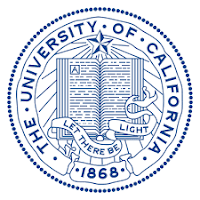
The University of Leeds
The University of Leeds is a redbrick university located in Leeds, West Yorkshire, England. Originally named the Yorkshire College of Science and later simply the Yorkshire College, it incorporated the Leeds School of Medicine and became part of the federal Victoria University alongside Owens College (which eventually became the University of Manchester) and University College Liverpool (which became the University of Liverpool). In 1904, a royal charter, created in 1903, was granted to the University of Leeds by King Edward VII.
The university has around 33,500 students, the eighth-highest number of any university in the UK. From 2006 to present, the university has consistently been ranked second in the United Kingdom for the number of applications received, second only to the University of Manchester. Leeds had a total income of £547.3 million in 2010/11, of which £124 million was from research grants and contracts The university has financial endowments of £49.3 million (2009–10), ranking outside the top ten British universities by financial endowment.
The university is a founding member of the Russell Group of research-intensive universities, the N8 Group for research collaboration the Worldwide Universities Network, the Association of Commonwealth Universities, the European University Association, the White Rose University Consortium, the Santander Network and CDIO and is also affiliated to the Association of MBAs, EQUIS and Universities UK.
Leeds is ranked nationally between 14th (Times Higher Education) and 23th (The Guardian). Internationally, the university is ranked as the 32nd best in Europe and globally ranked 87th in the 2015 QS World University Rankings and 101–150 (2015 ARWU). Leeds was ranked 8th in the UK in the 2008 Research Assessment Exercise, the best result in the Yorkshire and the Humber region and in 2010, Leeds was ranked as the 9th most targeted British university by graduate employers. Notable alumni include former Secretary of State Jack Straw, former co-chairman of the Conservative Party Sayeeda Warsi, American actor Chris Pine, Piers Sellers (NASA astronaut) and five Nobel laureates.
Leeds is ranked nationally between 14th (Times Higher Education) and 23th (The Guardian). Internationally, the university is ranked as the 32nd best in Europe and globally ranked 87th in the 2015 QS World University Rankings and 101–150 (2015 ARWU). Leeds was ranked 8th in the UK in the 2008 Research Assessment Exercise, the best result in the Yorkshire and the Humber region and in 2010, Leeds was ranked as the 9th most targeted British university by graduate employers. Notable alumni include former Secretary of State Jack Straw, former co-chairman of the Conservative Party Sayeeda Warsi, American actor Chris Pine, Piers Sellers (NASA astronaut) and five Nobel laureates.
































